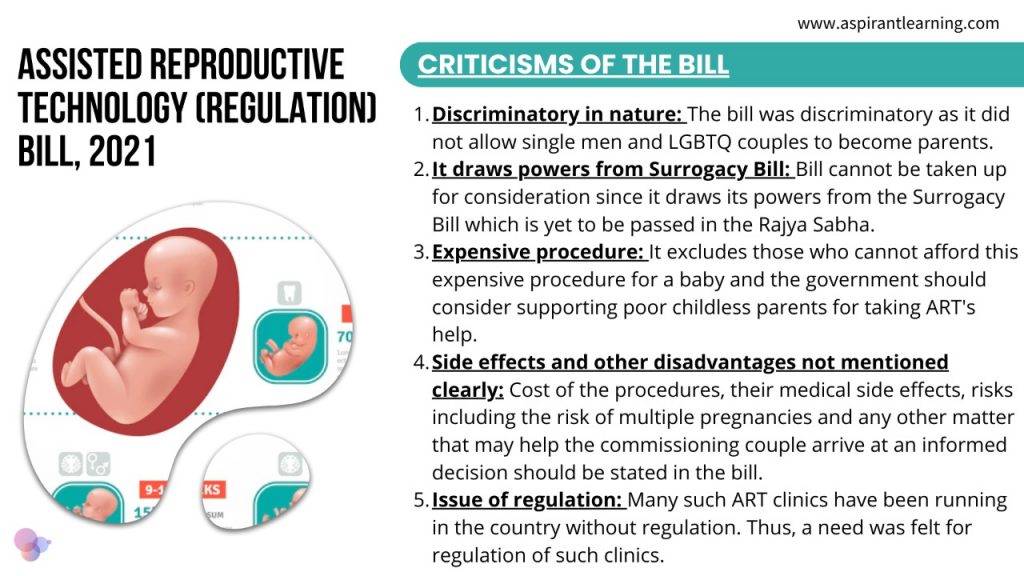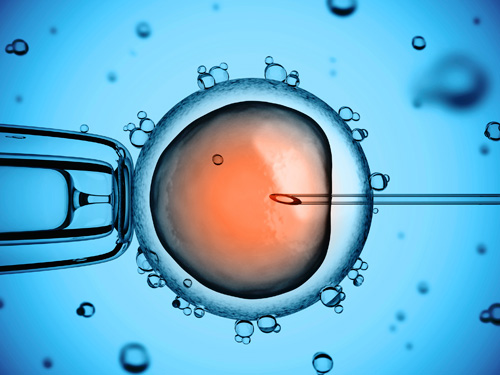News Highlight
According to the petitioners, the prescription of the upper age limit under Section 21 (g) of the ART Act is irrational and violative of their right to reproduction.
Key Takeaway
The Kerala High Court has directed the National Assisted Reproductive Technology and Surrogacy Board to alert the Central Government about the need to a re-look at the upper age limit prescribed for using assisted reproductive technology.
Assisted Reproductive Technology (Regulation) Bill, 2021
- Aim of the Bill
- The Bill aims to regulate and monitor assisted reproductive technology clinics and banks, avoid technology misuse, and encourage ethical service delivery.
- In addition, this bill is intended for those who wish to become parents.
- It is up to the ladies to become mothers if they wish.
- Furthermore, the law excludes live-in couples, single men, and members of the LGBTQ community.
- Who is eligible for this?
- According to the Assisted Reproductive Technology (Regulation) Bill, a woman who wishes to donate an ovum must be between the ages of 23 and 35, married, and have at least one child of her own who is 3 years or older.
- According to the bill, a woman above the legal marriage age but under the age of 50 and a male over the legal marriage age but under the age of 55 are eligible for assisted reproductive technology services.
- A couple or single women can also use ART to become a parent.
- National Registry of Banks and Clinics of India
- According to the bill, every ART clinic and the bank must be registered with the National Registry of Banks and Clinics of India.
- Additionally, the law calls for the creation of a registry.
- States will designate authorities to handle registration.
- Furthermore, every five years, the registration must be renewed.
Need for ART regulation in India
- Minimum standards and codes
- The bill proposes establishing minimum standards and behaviour regulations for reproductive clinics and egg or sperm banks.
- Standard operating procedures
- Standard operating procedures must be developed to achieve “uniform costs” and “global quality standards” across India.
- Monitoring body
- The committee also recommended establishing a monitoring body to prevent private parties from “commercialising” ART services.
Assisted Reproductive Technology (ART)
- About
- Firstly, it is employed in treating infertility.
- Fertility therapies that use a woman’s egg and a man’s sperm are included.
- In addition, it extracts eggs from a woman’s body.
- Embryos are formed by combining eggs with sperm.
- The embryos are subsequently implanted into the woman’s body.
- The most popular and efficient type of ART is in vitro fertilisation (IVF).
- Donor eggs, donor sperm, or frozen embryos are sometimes used in ART operations.
- A surrogate or gestational carrier may also be used.
- A surrogate is a woman who becomes pregnant using sperm from the couple’s male partner.
- The most common complication of ART is multiple pregnancies.
- Furthermore, it can be prevented or minimised by limiting the number of embryos put into the woman’s body.

Surrogacy
- About
- Surrogacy is a woman agreeing to carry a kid for someone else.
- Following the child’s birth, the birth mother transfers custody and guardianship to the intended parent or parents.
- A surrogate or birth mother is a woman who undertakes to carry and give birth to another person.
- The intended or commissioning parents are the parents of a baby born through a surrogacy arrangement.
- India is one of the few remaining countries that allow commercial surrogacy.
- Commercial surrogacy, on the other hand, is wholly permitted in India.
- While commercial surrogacy is allowed in India, no specific law governs it.
Way Forward
- Independent organisations, not clinic ethics committees, should give mandatory counselling.
- All ART entities shall be constrained by central and state government directives in the national interest, cordial relations with other states, public order, decency, and morality.
- All constitutional, medical-legal, ethical, and regulatory problems must be thoroughly investigated before harming millions.
Pic Courtesy: CDC
Content Source: The Hindu



